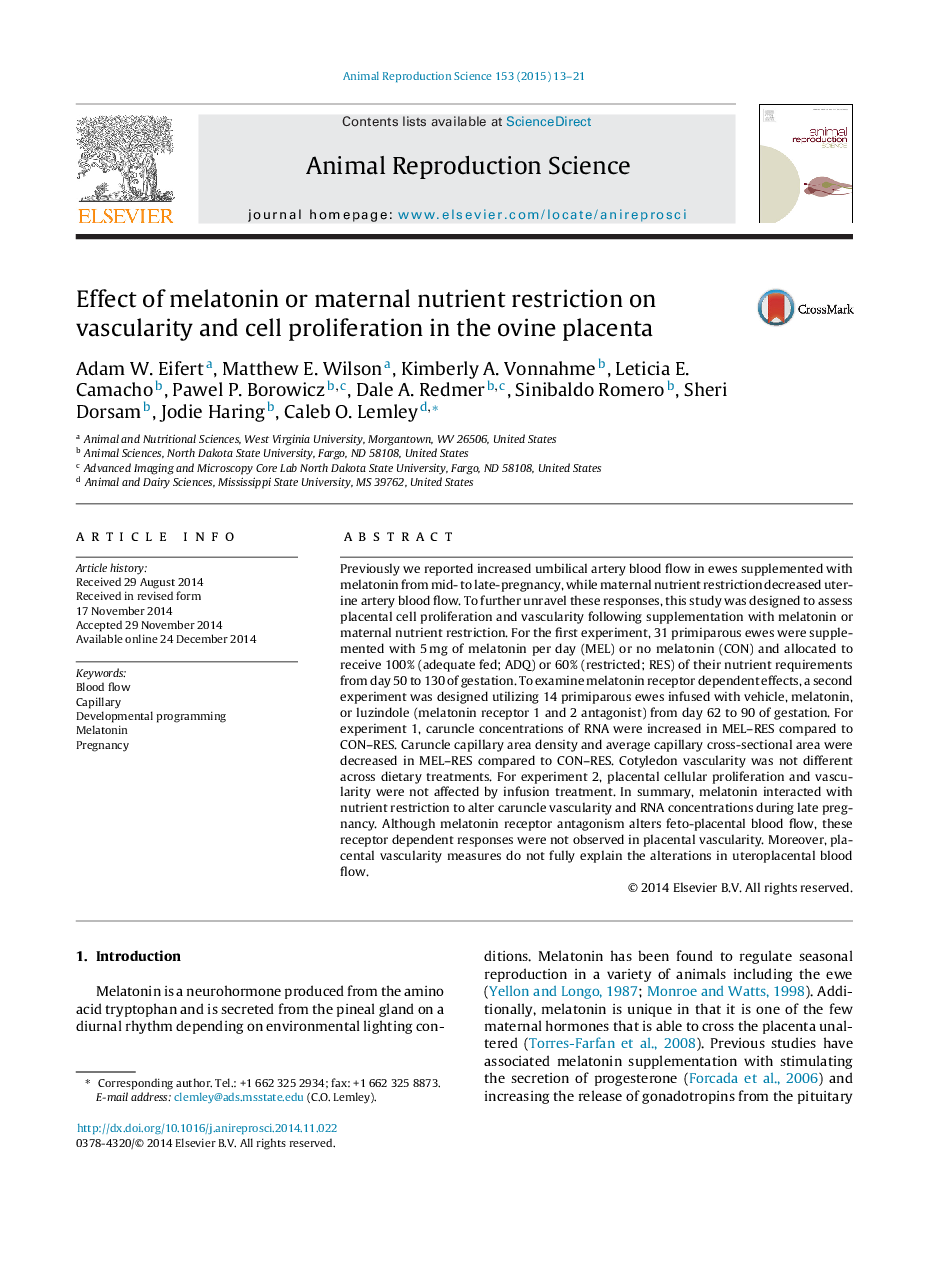| Article ID | Journal | Published Year | Pages | File Type |
|---|---|---|---|---|
| 8404430 | Animal Reproduction Science | 2015 | 9 Pages |
Abstract
Previously we reported increased umbilical artery blood flow in ewes supplemented with melatonin from mid- to late-pregnancy, while maternal nutrient restriction decreased uterine artery blood flow. To further unravel these responses, this study was designed to assess placental cell proliferation and vascularity following supplementation with melatonin or maternal nutrient restriction. For the first experiment, 31 primiparous ewes were supplemented with 5Â mg of melatonin per day (MEL) or no melatonin (CON) and allocated to receive 100% (adequate fed; ADQ) or 60% (restricted; RES) of their nutrient requirements from day 50 to 130 of gestation. To examine melatonin receptor dependent effects, a second experiment was designed utilizing 14 primiparous ewes infused with vehicle, melatonin, or luzindole (melatonin receptor 1 and 2 antagonist) from day 62 to 90 of gestation. For experiment 1, caruncle concentrations of RNA were increased in MEL-RES compared to CON-RES. Caruncle capillary area density and average capillary cross-sectional area were decreased in MEL-RES compared to CON-RES. Cotyledon vascularity was not different across dietary treatments. For experiment 2, placental cellular proliferation and vascularity were not affected by infusion treatment. In summary, melatonin interacted with nutrient restriction to alter caruncle vascularity and RNA concentrations during late pregnancy. Although melatonin receptor antagonism alters feto-placental blood flow, these receptor dependent responses were not observed in placental vascularity. Moreover, placental vascularity measures do not fully explain the alterations in uteroplacental blood flow.
Related Topics
Life Sciences
Agricultural and Biological Sciences
Animal Science and Zoology
Authors
Adam W. Eifert, Matthew E. Wilson, Kimberly A. Vonnahme, Leticia E. Camacho, Pawel P. Borowicz, Dale A. Redmer, Sinibaldo Romero, Sheri Dorsam, Jodie Haring, Caleb O. Lemley,
